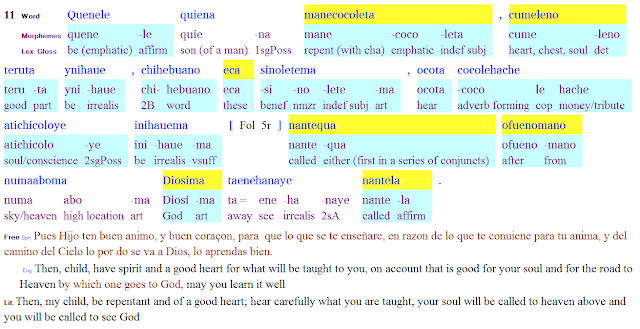This is one of the excellent plates showing drawings of early Timucua life:
https://www.floridamemory.com.
The text description of the roles of transgender people here is very interesting, though with with a probable overlay of European moral judgment:
We cannot tell very much about Timucua attitudes to gay/lesbian/transgender issues from the available material, but there are several parts of the confessional that ask about the matter and give us some words.
https://www.floridamemory.com.
The text description of the roles of transgender people here is very interesting, though with with a probable overlay of European moral judgment:
Employments of the HermaphroditesIn this country there are numerous hermaphrodites, a mixture of both sexes. They are considered odious by the Indians, but as they are robust and strong they are used to carry loads instead of beasts of burden. When the kings set out to war, it is the hermaphrodites who transport the supplies. They place the Indians, dead from either wounds or sickness, on a stretcher made of two stout poles covered with a mat of woven thin canes. The head rests on a fur; a second fur is wound around the stomach; a third around the hips; a fourth is placed around the calves. (I did not ask the reason for this custom, but I suppose it is for show, for sometimes they do not do all this and simply bind one leg.) Next they take belts of leather, about three or four fingers wide and fix them at both ends of the poles and put them on their heads, which are very hard; then they carry their dead to the place of burial. Persons with infectious diseases are carried to places reserved for them on the shoulders of the hermaphrodites who supply them with food until they are well again.
We cannot tell very much about Timucua attitudes to gay/lesbian/transgender issues from the available material, but there are several parts of the confessional that ask about the matter and give us some words.
All four of the words are fairly long for monomorphemic nouns, so they are probably compounds of some kind. The only clue at this point is that three of them begin with yuba, the word that means 'bottom'. Unfortunately, the remaining parts have not yet been found elsewhere in the corpus.






